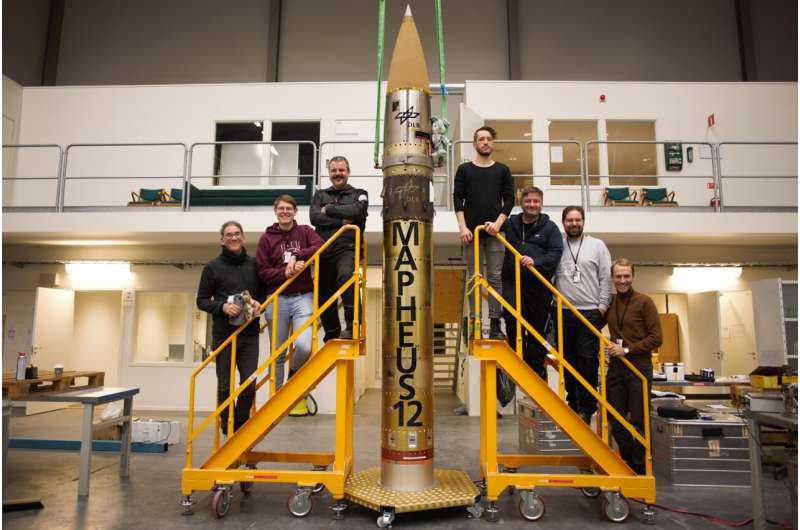Earth's simplest and smallest animals rocket into space for cancer research

The mission was to test the effects of zero gravity on Trichoplax, the tiny animals traveling to more than 250 km above the Earth, whose ancient mechanisms could be used to develop therapeutic or preventative measures for human cancer.
Lead researcher from Australia, Professor Patrick Humbert from the La Trobe Institute of Molecular Sciences (LIMS) at La Trobe University, was at the Esrange Space Center in Sweden for the launch of MAPHEUS-12.
Professor Humbert said experiments with Trichoplax in zero gravity are expected to give the team insight into detecting and repairing tissue damage, as part of a broader goal to prevent cancer.
"Trichoplax is ideal for this sort of experiment. Because it is one of the first multicellular animals, it is one of the first to have needed to find a way to stop cancer and stop one cell 'cheating' on another and growing faster and taking over the whole animal," Professor Humbert said.
"Trichoplax is also one of the fastest healing animals on the planet, with a simple cut being able to heal in a few minutes. As astronauts cannot heal wounds properly in space, we also think that these experiments will teach us about human wound healing."
"Overall in this project, we are using Trichoplax to understand the very first steps of cancer, which is how and why tissues become disorganized as the very first pre-requisite event before a tumor starts growing—and how loss of gravity impacts on regeneration and cancer in space," Professor Humbert said.
Professor Humbert said the launch was hailed a success by the international research team.
"We were able to successfully launch the rocket with experiments that we have been working on for more than 18 months and retrieve the animal samples," Professor Humbert said.
"The initial technical profile for the experiment looks great so we are now eagerly waiting to see what the data analysis tells us back in the lab."
The launch occurred at the Esrange Space Center and was coordinated by the German Aerospace Center mobile rocket base (MORABA) and the Swedish Space Corporation.
The Trichoplax were loaded onto a sounding rocket and reached an altitude of 260 km above the Earth before falling back to Earth.
During the 30-minute flight, the team took regular samples to measure the effects of loss of gravity, or "microgravity" on the genetic program of Trichoplax—that is any genes switched on or off after take-off and during microgravity.
The rocket experimental payload returned to Earth and was collected by helicopter in the tundra and samples were removed to be analyzed back in the lab.
This is part of a series of experiments where the international team will be testing responses to regeneration and cancer in Trichoplax with short and long-term exposure to microgravity.















